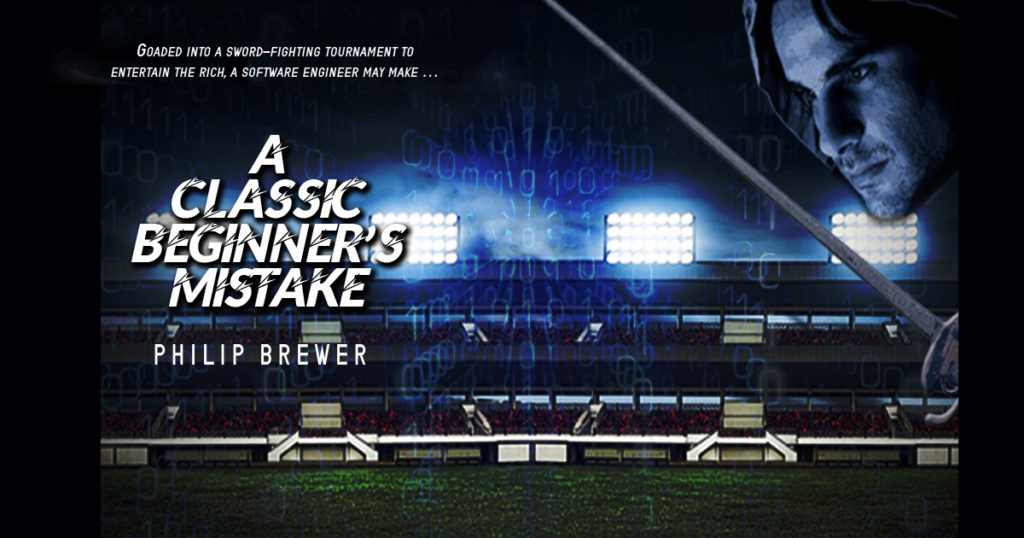“… the largest part of the active author community has settled at Blue Sky where they are once again suckling on the teat of venture capital.”
Steven D. Brewer https://stevendbrewer.com/social-media-as-an-author/
Tag: writers
2023-03-11 07:07
Now that I have a story out in book form, I’ve gone ahead and created an Amazon Author page, which you can see here: https://www.amazon.com/author/philip-brewer
I suppose I should add it to my social media contacts, etc.

2022-04-25 14:48
I have booked a room at the Hyatt Regency for myself and my brother @author_sdbrewer, and booked travel on Amtrak, to attend WorldCon.
If you’re going to be there, let me know! I look forward to seeing you!
2022-04-05 08:54
My brother @limako and I bought our memberships to WorldCon some weeks ago. If you’re in the sf world, you should come too! Membership rates go up May 1st, so you’ll want to join right away.
We just got word that the website for room reservations will open in less than three weeks!
2022-02-26 07:04
I saw #writerslift on a twitter profile, and thought I’d found a community of writers who also lift weights. But no.
2021-12-24 06:10

“To me, success as a writer would be dying alone on an ice floe shortly after turning eleventy-one.”
2021-11-24 06:01
Just in case you need an excuse to spend some money:
“spending money to upgrade the aesthetics of your workspace is not just an exercise in expression, but is perhaps instead one of the best business investments you’ll ever make.”
Source: The Forgotten Tale of George Lucas’s Writing Tower – Study Hacks – Cal Newport
Recommended reading: The Windsor Method: The Principles of Solo Training
Whether I’m trying to “get enough exercise” (as I tried to do for years), or trying to “fill my days with movement” (which I’ve realized is a much better way to think about my physical activity), training has been a constant. As someone who has only rarely trained as part of a group, or had a teacher or coach, a lot of my training has been solo training.
Often my focus was on endurance training: preparing for very long walks, foot races, or a 100-mile bike ride. I also did strength training. And my training often included skill training—Tai Chi, parkour, tennis (long ago), even fencing (one brief term in college).
Training by yourself is hard. It’s hard to motivate yourself to go out and do it, and it’s hard to push yourself enough to make good progress (and if you’re good at pushing yourself, it’s hard to know when to take time to recover instead). For skills-based training, it’s hard to learn those skills without a teacher or coach. And for activities with any sort of competitive element, such as tennis or fencing, it’s especially hard to train without a partner. This has been particularly acute during the pandemic, but really it’s always true.
And here is where Guy Windor’s new book The Windsor Method: The Principles of Solo Training comes in.
A lot of the specific information in the book is stuff I’ve figured out myself over the years: Some training is just about impossible to do without a teacher (learning your first Tai Chi form) or a partner (practicing return of serve in tennis). But for most activities, that fraction of the training will be much less than half of your training. Much of the rest of your training is either easy to do by yourself (strength and endurance training), or at least possible to do by yourself once you’ve learned the skill well enough to be able to evaluate your own performance (practicing a Tai Chi form, for example).
The key is to spend some time figuring out the entire scope of your training activities, and then think deeply about what category each activity falls into.
To the extent that your access to a teacher, coach, or partner is limited (as during a pandemic), emphasize the things that are easy to train solo (such as strength training and endurance training), then judiciously add those parts of the training that are advantaged by (or require) a teacher or partner as they are available.
What Guy Windsor adds to this sort of intuitive structuring of training is, as the title suggests, a method. He has systematized the structure in a way that makes the decision-making parts of the activity easier to do and easier to get right.
Perhaps even more important than that, he has taken a step back to talk about all the parts of training that aren’t just skills training for your particular activity. That other stuff—sleep, healthy eating, breathing, mobility, flexibility, strength training, endurance training, etc.—are actually more important than this or that skill, while at the same time being the bits that are easiest to train solo. If you’re stuck for a year with no partner, no teacher, and no coach, but you spend that year focusing on health and general physical preparedness, you’ll scarcely fall behind at all, and make yourself ready to jump into your skills training with both feet once that’s possible again.
I should mention that Guy Windsor’s book was written with practitioners of historical European martial arts especially in mind, but that scarcely matters. It is entirely applicable not only to practitioners of any other martial art, it is entirely relevant to literally anyone who trains in anything.
And, since many of my readers are fiction writers, I should also mention another of Guy Windsor’s books Swordfighting for Writers, Game Designers, and Martial Artists. When I signed up for his email list, he offered it as a free download for people who did so.
Being forced into purely solo training for 18 months has made me keenly aware of the many opportunities for non-solo training available here locally. There’s a local fencing club that I’ve had my eye on for some time, and our financial situation is such that now we could afford for me to join and buy fencing gear. Just today I searched for and found a local historical European martial arts club on campus—I’ve asked to be added to their Facebook group and joined their Discord. One of my Tai Chi students teaches an Aikido class with the Urbana Park District—I had started studying with him right as the pandemic began and got in two classes before everything was canceled. And, not sword-related, but cool and great training, is indoor rock climbing at Urbana Boulders.
Just as soon as the pandemic lets up for real, I’ll be doing some of those things.
In the meantime, I’m going over my solo training regimen, taking advantage of the insights that Guy Windsor provides in The Windsor Method: The Principles of Solo Training to figure out what adjustments I should make.
Thursday writing group
Local sf writer Elizabeth Shack has been doing the work of organising a few writers to meet Thursday evenings at a local coffee shop. It’s not a critique group; it’s a writing group. There’s a few minutes of conversation and sharing of news, but the main point of the event is to do the usually solitary writing in a slightly less solitary environment.
I’ve been twice now. (I’ll be going again this evening.) I’ve been highly productive both times so far.
I think Elizabeth would be pleased to have the group who shows up expand. (This sort of thing works better when there are enough regulars that when one or another person has to miss a day there’s still a group.) She’s got a contact form on her web site, if you’re a local writer and want to express an interest in joining us.
Humor just for me, by Holly Theisen-Jones
There’s a certain category of joke called a “three-percenter,” the sort of joke that’s only going to appeal to 3% of your audience, but that will really, really appeal to them. (Part of the appeal is knowing they’re in the select group that gets it.) You have to be careful using them: At the first sign that a piece is full of inside jokes that they’re missing, the remaining 97% of your audience is gone.
Still, it’s worth embedding the occasional three-percenter in your humor, because for its select audience a three-percenter can really make a piece. What’s best, though—what’s comedy gold when you can pull it off—is a joke that feels like a three-percenter, but that feels that way to the whole audience.
With that in mind, let me say that My Fully Optimized Life Allows Me Ample Time to Optimize Yours by Holly Theisen-Jones is the funniest thing I’ve read in a long time. Sitting alone in my study, still tired after cranking out three sets of twenty kettlebell swings, I laughed so hard I could barely breath. The whole thing read like one three-percenter after another, with me being in the 3% the whole time. Gloriously, hilariously funny. Even the lists of trendy superfoods in the smoothies were funny.
So now, the question is: Is this a humor story with six dozen three-percenters and I just happen to be in the 3% for all of them? This is possible. Perhaps even likely. But maybe the audience is a bit bigger than that.
At 3 pm, it’s time to hit the gym. After years of research, I have engineered the most efficient possible workout, which is a single, 100-pound kettlebell swing, followed by four and a half minutes of foam rolling. (See my e-book for step-step instructions)
Source: My Fully Optimized Life Allows Me Ample Time to Optimize Yours – McSweeney’s Internet Tendency
Let me know if you’re in the 3%.
